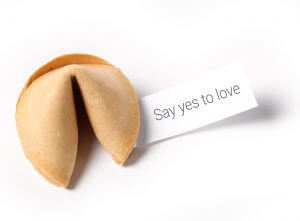We all know the best bits of history start with a mystery and the history of the Tarot is truly mysterious. There are so many things we don’t know about the Tarot, for example, we are not sure what the word ‘Tarot’ means. True, there is a card game something like bridge called Les Tarots in French and Tarocchi in Italian but why this became associated with divination is unknown. Nor does anyone know where the Tarot as we know it came from. Some folks say it developed in Northern India and was brought to Europe by the Romany people. Other sources suggest the Chinese may have originated the Tarot. Other less likely candidates for the genesis of the Tarot include Ancient Egypt, the Celts, Christian sects and Atlantis. Some occults such as Eliphas Levi have also argued that the Tarot is in some way connected to the Cabbala. Whilst this is rather unlikely as nothing like the Tarot appears in Cabbalist texts there are similarities; the Cabbala is based on twenty-two letters and the Tarot has the same number of cards in the Major Arcana. Equally, the Cabbala claims God made the world in four steps and there are four suits in the Tarot.
We can’t say much definite about the Tarot until 1392 when we know a pack was painted for the French King Charles VI; seventeen cards from this pack can still be seen at the Biblotheque Nationale in Paris. Less than a hundred years later, a fine pack of Tarot was produced in the middle of the fifteenth century by the artist Bonifacio Bembo as a wedding present to celebrate unification by marriage of the Sforza and Visconti families. It is interesting to note that in 1300 the church executed Maria Visconti whom a group of Christian heretics had proclaimed female pope – remember the mysterious Papess of Tarot card fame, is there a link? Whilst Charles VI may have been a Tarot fan Edward IV of England was not and he banned the cards, not that it did much good: soldiers returning from the war with France smuggled them in anyway and soon many English nobles had a set.
In 1781 the wonderfully named Antoine Court de Gebelin claimed that he had discovered the book of universal knowledge created by the Egyptian god Thoth – except it wasn’t a book as we think of it, rather it was…you guessed it: the Tarot cards. Inspired by this, an occultist known as Etteila developed the first pack of Tarot cards designed solely for divination.
The Tarot developed further in 1910 when an English occultist called Arthur Waite published a version of the Tarot with illustrations by Pamela Colman Smith. Up until this time only the twenty-two Major Arcana cards had scenes or images of people on them, the Minor Arcana simply showed four items from whatever the relevant suit was, thus, the Six of Cups would show six cups, the Two of Pentacles would show two pentacles and so on. These designs with little to separate one card from another of the same suit made it hard to learn the meanings of the cards or interpret the images. The Waite pack was different; every card was illustrated making each card clearly defined from others in the same suit. Waite was influenced in the design of his cards by his membership of a Cabbalistic esoteric group to which he belonged called the Order of the Golden Dawn, but he wasn’t its only member to turn his gaze towards the Tarot.
In 1944 fellow member of the Order of the Golden Dawn, Aleister Crowley, published a book on his interpretation of the Tarot called the Book of Thoth. Crowley might have been a controversial character in many ways, but the version of the Tarot cards which he produced in cooperation with Lady Freda Harris is hauntingly beautiful if not always easy to read due to its dense symbolism. Despite its charms the Crowley pack was not printed until 1969 which brings us neatly to the modern popularisers of the Tarot; Hippies. The Hippies re-discovered or more accurately re-invigorated the Tarot. It became so popular that Bob Dylan used the image of The Empress from the Waite pack on the back cover of his Desire album.
Today, thanks in part to the work of Waite and Crowley there are a multitude of Tarot packs to choose from including those based on; Wicca, herbalism, dragons, Arthurian legends and Ancient Egypt. Which do you prefer?

